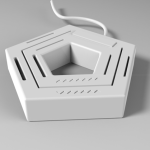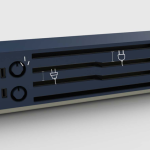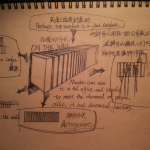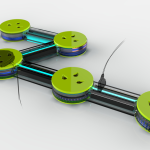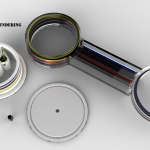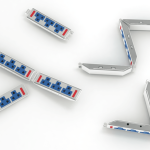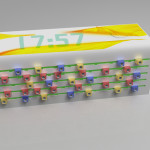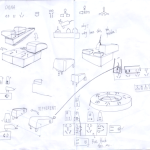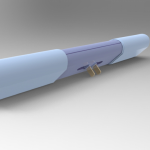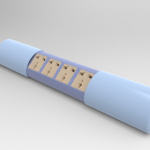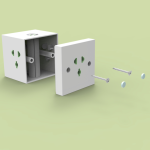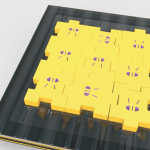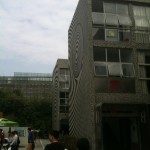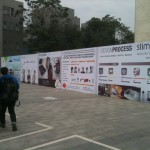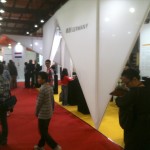
Foshan University’s School of Art and Design invited me to do a seven-day workshop with their 4th-year Industrial Design class last November. I made some friends, learned much, and it was a lot of fun. I was assisted by Prof. Jack Fan and Instructor Phoebe Guo, who alternated acting as advisors and interpreters. I should note here that all Chinese universities require entering students to have some level of English proficiency: arts and sciences generally have a high requirement, but Art Design students in China are not expected to have as high a level of English proficiency. However, there is a lot that can be communicated with drawing, and as long as I had a pencil (or stylus and iPad), I could make myself understood, and my students could do the same for me.
I had six classes in the studio with the students:
Thursday Nov. 15: Introduction class with Prof. Jack Fan
Friday Nov. 16: “Make Your Classroom” with Phoebe Guo
Monday Nov. 19: Studio work and class review with Jack Fan
Tuesday Nov. 20: Studio work and class review with Phoebe Guo
Wednesday Nov. 21: Studio work and class review, with Jack Fan, Shelly Luo and Li Yueqiong
Thursday Nov. 22: Critical Design Symposium—no studio class
Friday Nov. 23: Student presentations of their work with Jack Fan, Phoebe Guo and Shelly Luo

The theme of the workshop was to explore how to get electricity from a wall outlet to an appliance. Although most of the design submissions centred around power bars and extension cords, I urged them to pursue their curiosity and think about new or alternative materials and approaches.
We started things with a discussion of the question: how do we use the electricity that comes to our homes and offices as alternating current, 120 or 220 volts?
We then looked at:
- different world standards of plugs and sockets, including two- and three-prong devices
- the difference between alternating and direct current
- the nature of conductors and insulators and general safety issues
- the problem of a limited number of electrical sockets and an expanding number of electrical devices

This last point is where I disclosed my project (to be discussed in a later post), which attempts to address the problem of small transformer crowding on power bars. When I had proposed the workshop, I was hoping to interest a local consumer electrical device manufacturer in developing my idea, which would have resulted in a working (electrically working, that is) prototype. Unfortunately, there were no takers, so Jack proposed that we ask another instructor, Shelly Luo, to help me model a design in Solidworks and then render it out in 3D. The result will be two prototypes (minus the electrical connections) produced using a computer aided milling machine. There were many local agencies that do this for students for a very reasonable price, compared to North America. We didn’t have time to output the prototypes before I had to go, so we will wait until my next trip in March to pick it up. It could be shipped, but I’m in no rush.
Student Work
I’m presenting here the work of ten students who I felt had genuinely benefitted from the workshop and came up with some really interesting ideas and/or exceptional execution—given the short time frame. The students were asked to submit process books of their developmental work, including research material and drawings, along with final renderings in Solidworks or 3D Studio Max.
ZHINAN Liang, like many of the students in the class, were interested in pursuing the problem of socket crowding. He had several ideas, but ended up with a pentagon-shaped device that had sockets for the different plugs in common use in Asia.
ZHANG Yuchao is an excellent draughtsman, and had many good ideas. One idea that he presented mid-way through the workshop was for a charging station. I was very enthusiastic about this, because I had just seen a piece about ad-hoc phone charging stations in New York City after Hurricane Sandy. I think that his idea for an emergency charging station has real potential.
HUANG Keyu’s ring/cell power bar has five three-prong sockets. The sockets can be rotated about relative to each other by means of acrylic arms that hold the electrical wiring and also illuminate when source power is available. The power bar can be placed on the wall as an ornament. Some commercial potential here, I think.
TANG Jingheng’s idea is for a portable power bar in three sections that folds. I would have preferred to see the ability of the unit to fold neatly into a packet to save space, but only two sections do so at the moment.
LUN Huanyi had an interesting idea to allow the HOT, COLD and NEUTRAL sockets to move independently on rails behind the front of the module, making it possible to infinitely reconfigure the sockets and provide for several different styles of plug. The idea is good and I’d like to see more work to develop it further.
GUAN Mingan was full of ideas and much time was spent winnowing through the ideas to concentrate on just one. I encouraged him to think beyond practicality and consider something more speculative: a robot-controlled power bar. This is a three-wheeled device that’s controlled by a small infrared remote.
FANG Cuihua had difficulty coming up with an idea but her concept of a portable power bar in a collapsable tube is nonetheless well-executed and has exceptional attention to detail.
GAN Chaoping, one of the students just returned from a visit to RMIT, also had several good ideas. The one he chose to develop he calls his “Multi-purpose platoon insert design”. This power bar has cube and diamond shaped modules that make connection to the mains power through a conductive bar that runs through the middle of each cube. The cubes can accommodate all styles of plug currently in use in China. Another excellent effort that has some commercial potential.
CHEN Benzhao’s idea was to dispense with the current socket styles and create a new standard that could fit into a plugboard of evenly-spaced sockets. Unfortunately his image doesn’t render the holes with uniform spacing.
GUAN Baoyu proposed a power bar based, I think, on a well-known Chinese story of the Han Dynasty warlord Cao Cao. Her “dislocation puzzle socket” conveys electricity to the sockets from the base; these puzzle sockets can be rotated at 90° increments.
